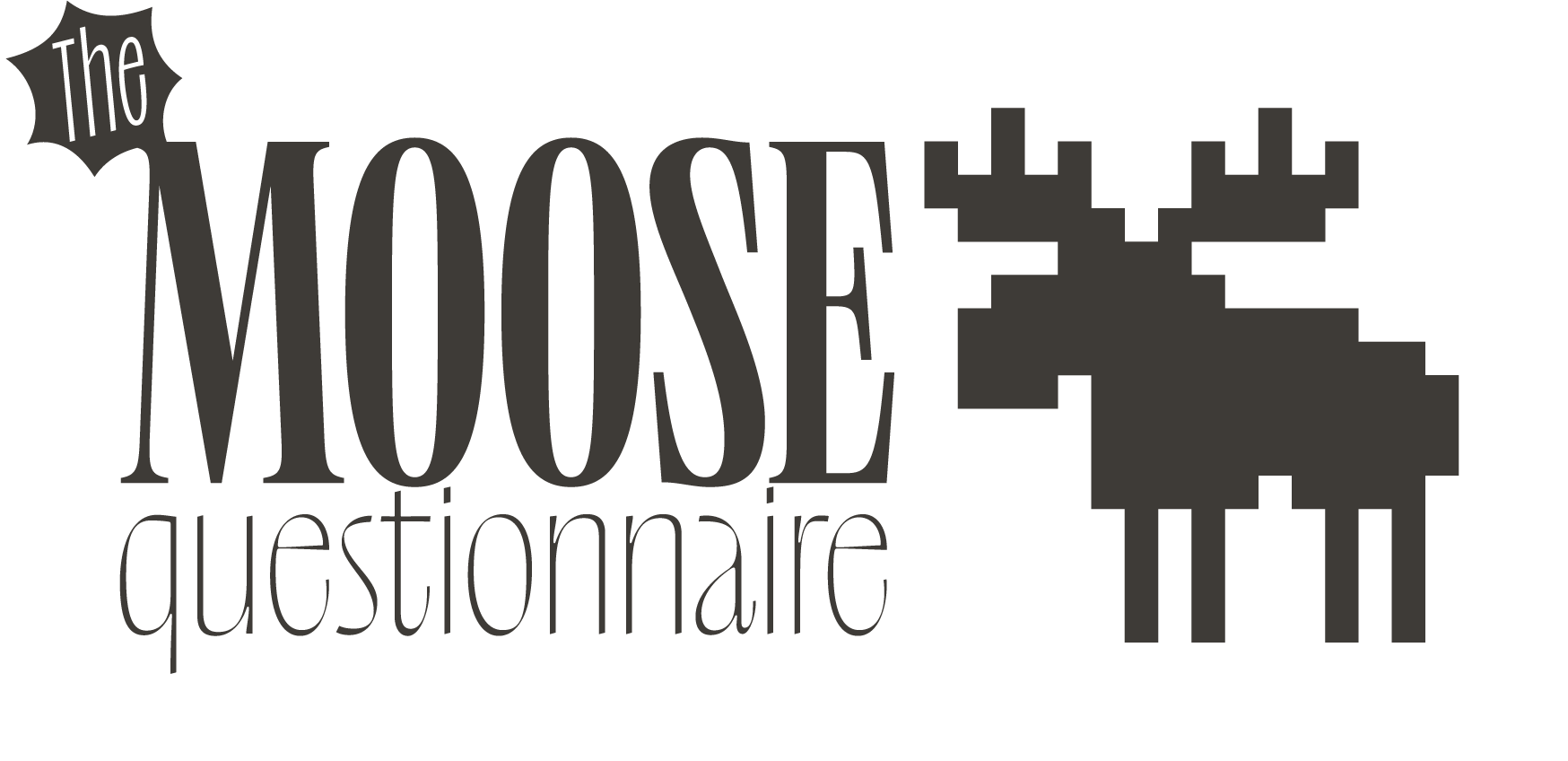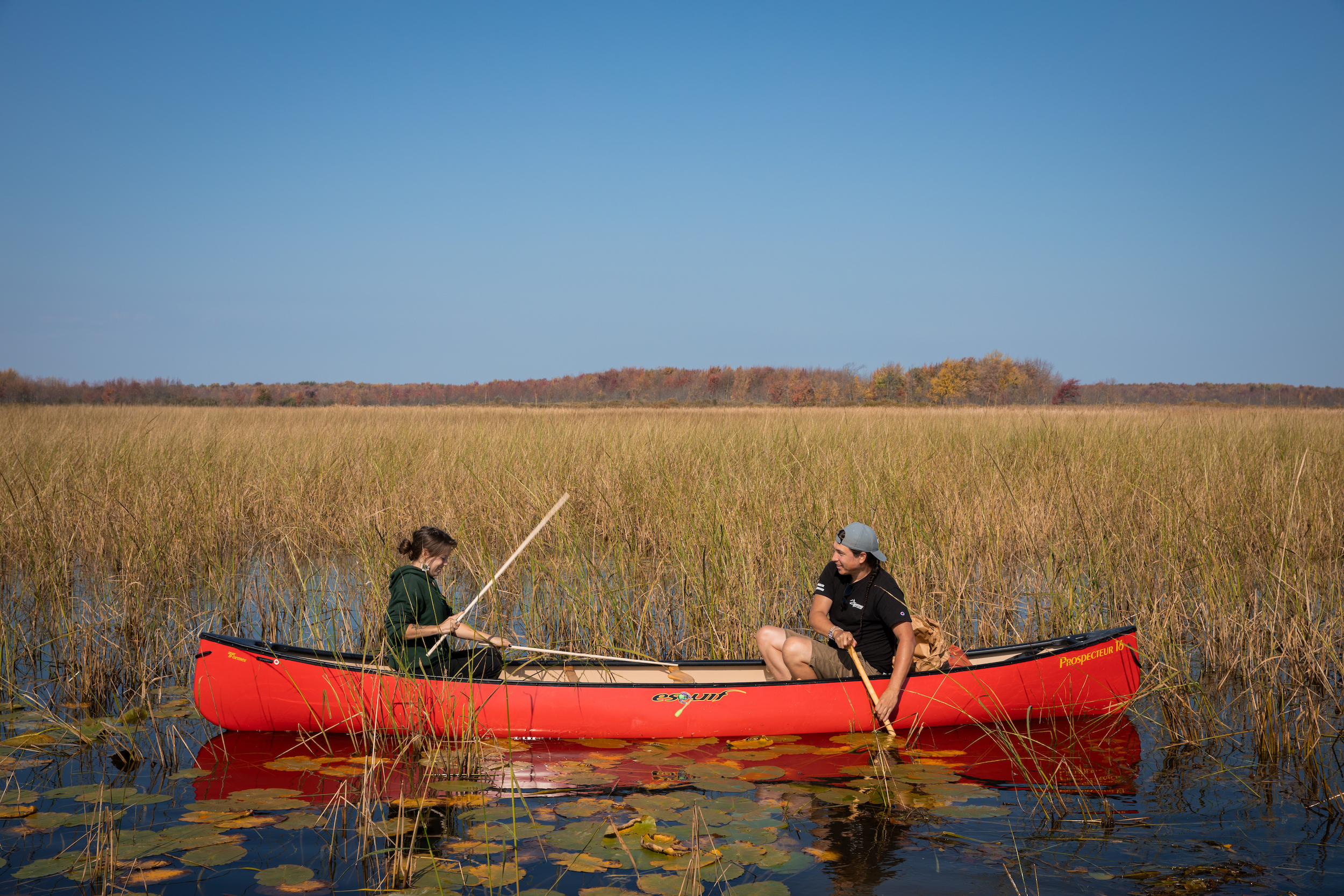
Hope for a huge, ancient and imperilled fish
First Nations are leading efforts to make sure lake sturgeon can find a home in...
Growing up, Christian Allaire loved spending summers with his cousins in his grandma’s backyard, near their home community of Nipissing First Nation. He also loved watching Drag Race with those same cousins, even after they voted against the strapless garbage bag minidress he made for a RuPaul-inspired home fashion contest.
In his new memoir, From the Rez to the Runway, Allaire details his years reconciling what often seemed like disparate identities: being an Ojibwe kid in rural Ontario who was absolutely obsessed with fashion. He knew his sister’s handmade powwow dress, “adorned with a rainbow assortment of colours and lines of jingle cones,” was both gorgeous and culturally significant. But when he began working in the fashion industry, many people barely knew Indigenous people existed, let alone what their contributions to style were, or could be.
Out March 25, Allaire’s memoir recounts the dramatic internships and tiny New York City apartments he endured on the way to becoming a senior writer for Vogue. Now, he’s helping fashion modernize its attitude toward identity, ethnicity and culture — including through regular coverage of the Indigenous Fashion Arts festival in Toronto — while still celebrating its enduring artistry and joy. (Fun tights! Statement bags for men!)
Allaire took The Narwhal’s Moose Questionnaire, which digs into a person’s relationship with the natural world. This interview has been condensed and edited for clarity, all opinions are the subject’s own.

I grew up spending summers on Lake Nipissing, and it’s still my favorite time of the year to go back home and go boating or swimming. I find that landscape so inspiring and grounding. So probably home.

When I was in high school, my sister, my cousins and I took a helicopter ride to the Grand Canyon, one of those tours that drops you right in the middle. That still feels like a fever dream to me. You feel so small in that environment, and you realize how big the world is. I still think back on that and it feels not real.
I think I would marry a bear, because they’re very fierce protectors, and you want that on your side, you know what I mean?
I would kill a caribou. Not only can you eat the meat, but you can also use the fur. A lot of Indigenous artists use the fur for beautiful earrings or hide. It’s an animal that you can use to its full potential if you kill it, which I think is important.
I would probably kiss a moose, because they’re very tall, and who doesn’t love a tall person?

I’m really inspired by a lot of youth activists. I think Autumn Peltier, who’s a fierce water protector in the Indigenous world, is doing really important work. Models like Quannah ChasingHorse are using their platform to educate a lot of people about environmental issues.
Anyone in a position of power, especially in the political world, has the ability to make change. But sadly, they care more about the economy than the environment. That’s why we have to elect more Native folks in political spaces.
I would say no, because I’m a dog person.
Honestly, I’m kind of bad with single-use plastics. I’m a big coffee drinker and the amount of cups I’ve contributed to the wasteland is probably not great. I’ve been trying to be better about that and using reusable cups, or making coffee at home. It’s really been an intention of mine, over the past year. And also not to use bags as much. I will walk out of a store with things literally in my hand instead of taking a plastic bag. I’m not perfect, but I’m trying.
I’m fiercely pro-fur. I’ve tried to drive the point home that it is not always an evil, mass produced thing. For a lot of communities, it’s a way of living. They literally need the meat. They use the fur for pelts. They use the bones for soups. I would actually say that’s the biggest thing I’ve been trying to change people’s minds about, is that fur can actually be an essential tool of survival.
Indigenous fashion is environmental. Indigenous designs are rooted in using really natural materials. Some of my favourite Indigenous designers are Jamie Okuma, Elias Jade Not Afraid and Orlando Dugi.

Great Lakes. I grew up around water.
Oh, probably because women use their brains a lot more. You know it’s true.
The Arctic. Because I’ve never been to that part of the world and I feel like that cold water would reset something in me. It seems so mystical over there, I would love to go there.
I’ve actually never been to a northern region, which is wild to me. One of my goals is to explore Canada more this year. My friend Tania Larsson, who’s an amazing jewelry designer, is based in Yellowknife, and she does these hide camps. I really want to go see what the communities are like over there and what they’re making.
Probably the fur hat my mom made me a few years ago. Now I bust it out whenever there’s a really nasty Canadian snowstorm. So it’s very useful, but it’s also very beautiful.
I always do a good smudge with cedar whenever I’m needing a grounding moment or a moment of clarity. It’s hard when you’re in New York City, it’s hard to feel grounded here. So that’s a little ritual I do for myself.
Maple syrup, always!
My family. Growing up, I was always taught to respect our surroundings and be mindful about the earth we live on. It was just something that was always sort of present in the things I was taught. So I would say, like, my mom, my aunties, my grandma, a lot of the women, the matriarchs.
Probably youth and the next generation, but the young kids now are way more dialed in with these things than I was, so I don’t know if they need my input. I feel like they’re doing really well on their own in terms of being mindful and all that.
View this post on Instagram
Do they really have a house in Muskoka? That’s crazy! Oh my god! Definitely Posh Spice. I mean, she literally raised me. I wanted to be her at one point. So yeah, her.
Yes, but I would say glamping. I need a mattress or something.
Get the inside scoop on The Narwhal’s environment and climate reporting by signing up for our free newsletter. Angello Johnson’s shoulders burn, and his arms...
Continue reading
First Nations are leading efforts to make sure lake sturgeon can find a home in...

We’re excited to share that an investigation by The Narwhal is a finalist for the...

A new documentary, Nechako: It Will Be a Big River Again, dives into how two...
